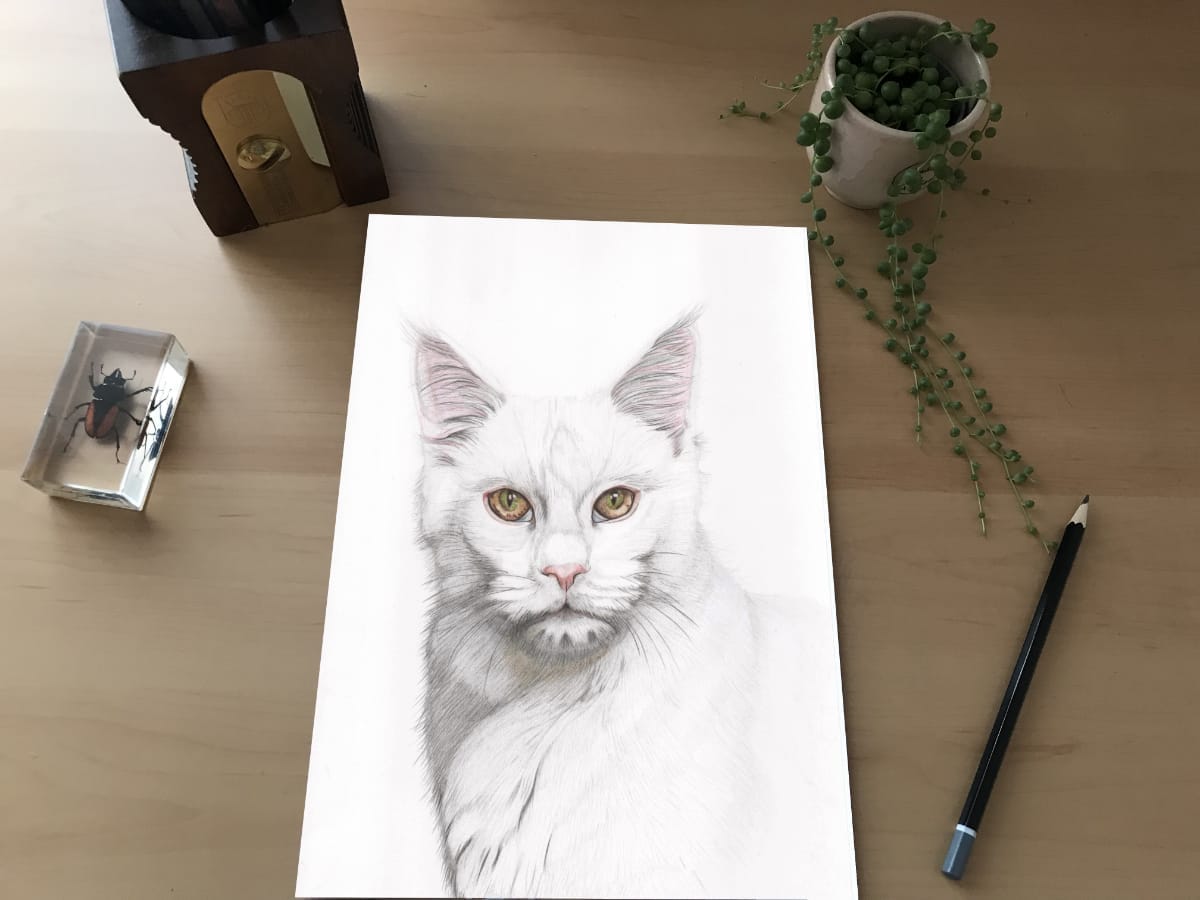White Cat
Details of Artwork: Created using Polychromos Faber-Castell colour pencils and Winsor & Newton A4 Bristol extra smooth 250g/m2 paper.
The White Cat (Felis Catus
The domestic cat (Felis catus) is a small, typically furry, carnivorous mammal.
Origins and Domestication:
Evolution:
- Domestic cats evolved from the African wildcat (Felis sylvestris lybica).
- Domestication began thousands of years ago, likely in the Fertile Crescent.
- The relationship started with cats being attracted to human settlements by rodents.
Historical Context:
- Early humans recognised the value of cats in controlling rodent populations, leading to a mutually beneficial relationship.
- Ancient Egypt played a significant role in the cat's cultural significance and spread.
Characteristics:
Physical Traits:
- Characterised by retractable claws, flexible bodies, acute senses, and a long tail.
- Their senses are highly developed, particularly hearing and smell, which are crucial for hunting.
- Their whiskers are very important touch receptors.
Behavior:
- Cats exhibit a range of behaviors, including hunting, grooming, and social interaction.
- They communicate through vocalisations (meows, purrs, hisses) and body language.
- Their behaviour can vary significantly between individuals and breeds.
Diet:
- Cats are obligate carnivores, meaning they require meat in their diet.
Ecological Role:
Global Distribution:
- Domestic cats are found worldwide, adapting to diverse environments.
- Feral cats can have a significant impact on local ecosystems, particularly on native wildlife.
Impact on Wildlife:
- Feral and free roaming domestic cats can have a large negative impact on native bird and small mammal populations.
Human Interaction:
Pet Ownership:
- Domestic cats are among the most popular pets globally.
- They provide companionship and are valued for their independent nature.
Feral Populations:
- Feral cat populations pose challenges for wildlife conservation and animal welfare.
Key takeaways are that domestic cats have a long history of living with people, and that they have spread to almost every part of the world.
